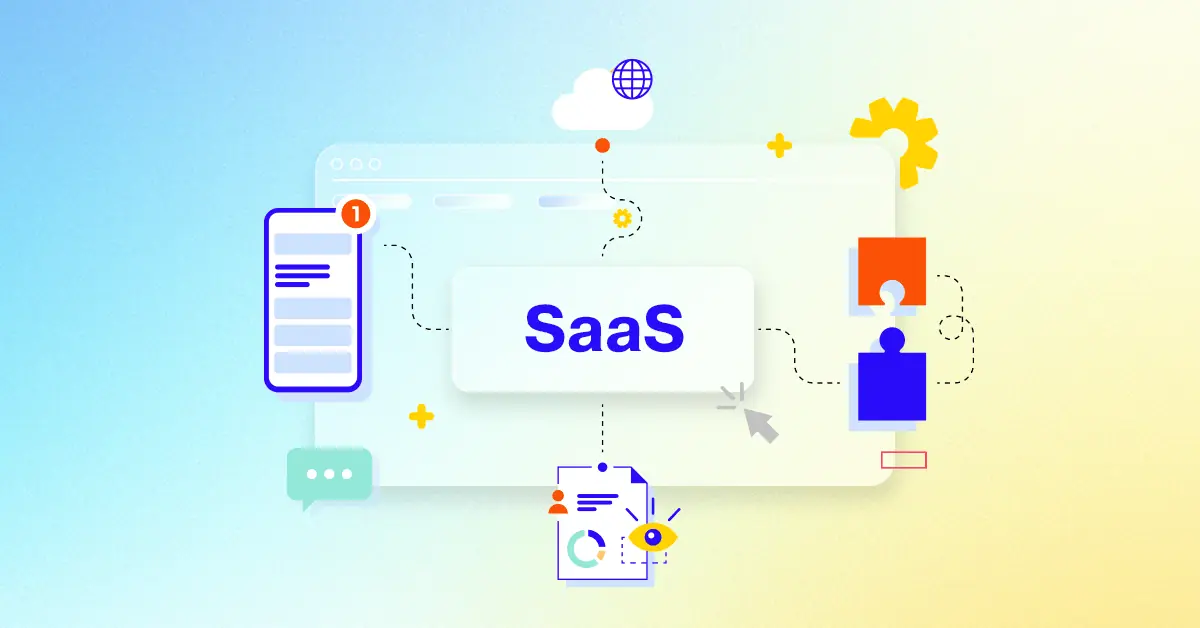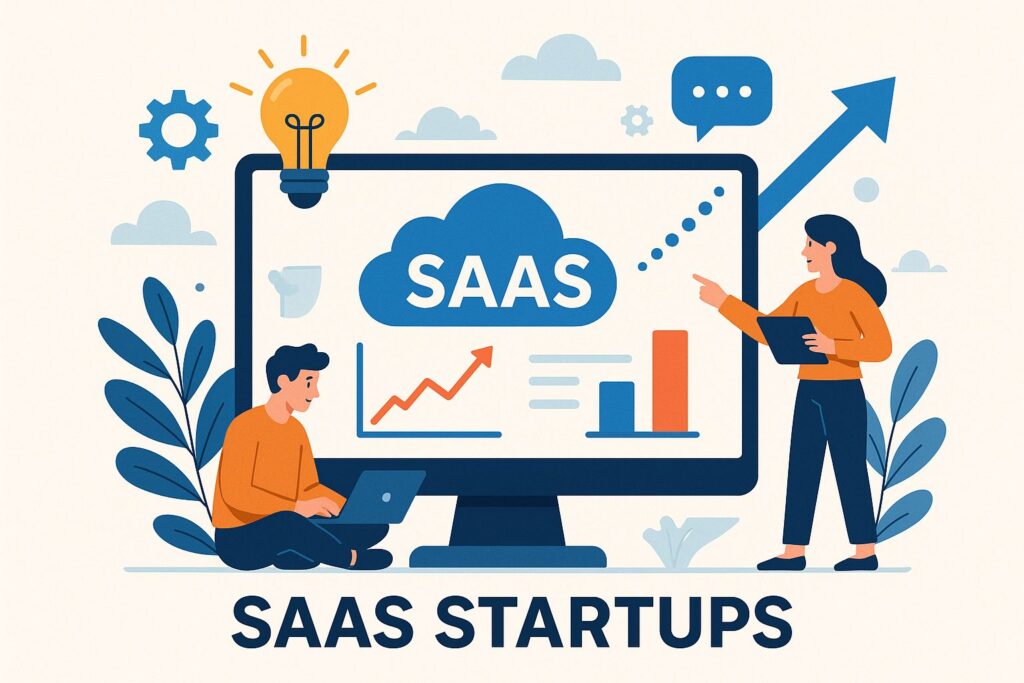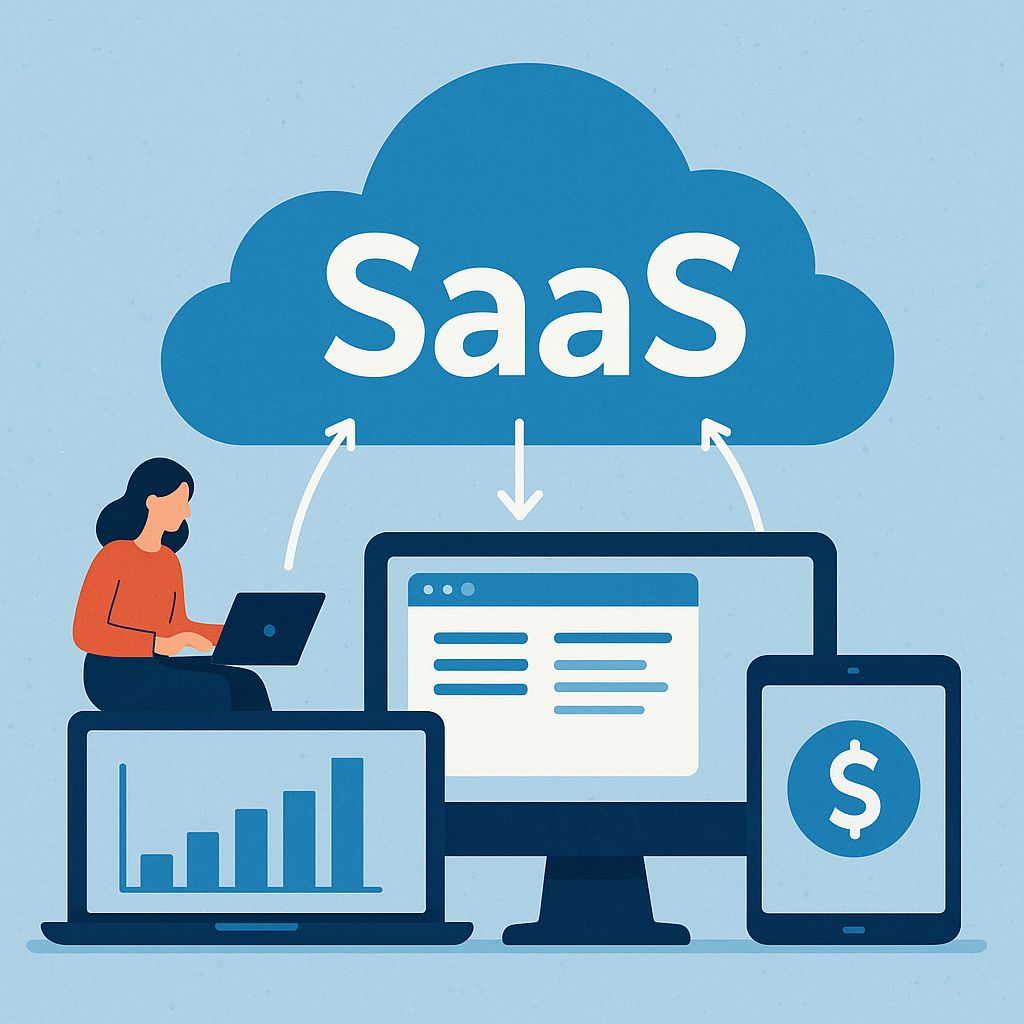Key Takeaways
- Custom videos can increase SaaS conversion rates by up to 93%, significantly outperforming text-only marketing approaches
- Five essential video types for SaaS startups include product demos, customer success stories, onboarding tutorials, problem-solution explainers, and social media micro-content
- New production technologies and remote services have reduced custom video costs to under $1,000, making them accessible for startups
- Visual explanations through video can reduce sales cycles by up to 40% by quickly communicating complex SaaS value propositions
- Video content drives 157% more organic traffic and boosts email click-through rates by up to 300% compared to text-only alternatives
The numbers don’t lie: SaaS companies without video in their marketing arsenal are bleeding conversion opportunities. In an increasingly crowded marketplace, standing out isn’t optional—it’s survival. As the founder of VideoSaasify puts it, “Today’s B2B buyers expect to see your product in action before they’ll even consider booking a demo call.”
Visual content has become the cornerstone of effective SaaS marketing, with video leading the charge. Wistia’s research shows that viewers retain 95% of a message when watching it in video format, compared to just 10% when reading text. For SaaS startups with complex value propositions, this dramatic difference in comprehension translates directly to conversion rates. Vidyard, a leader in video marketing solutions, has partnered with countless startups to develop affordable video strategies that drive growth without breaking the bank.
The days of needing $10,000+ budgets for professional video production are over. New technologies and production models have democratized video creation, putting high-quality custom content within reach of even bootstrapped startups. This article will explore how you can leverage these opportunities to accelerate your SaaS growth.
The Video Marketing Gap Killing SaaS Conversion Rates
Despite overwhelming evidence supporting video marketing effectiveness, 41% of SaaS startups still rely primarily on text-based communication to explain their products. This creates a significant competitive advantage for companies willing to invest in visual storytelling. The gap between companies leveraging video and those avoiding it continues to widen, with video-equipped SaaS businesses reporting 157% more organic traffic and 105% longer average site visits.
The attention economy dictates that you have mere seconds to capture interest before a prospect bounces. Text-heavy landing pages demand cognitive effort that today’s buyers simply aren’t willing to invest without some indication of value. Custom videos bridge this gap by delivering your core value proposition visually and efficiently.
“We saw a 34% drop in bounce rate after adding a 60-second explainer video to our homepage. Nothing else changed—just the video. That’s when we realized how critical visual communication had become to our funnel.” – Sarah Chen, Growth Lead at ProjectPulse
For technical or feature-rich SaaS products, the complexity barrier becomes even more problematic. Explaining your solution’s unique advantages through text alone forces prospects to mentally visualize your product—an unnecessary cognitive burden that often results in confusion or misunderstanding. Custom videos remove this barrier entirely by showing rather than telling.

Why Custom Videos Are Now Essential for SaaS Growth
The shift toward video isn’t simply about following trends—it’s backed by concrete performance data. SaaS companies implementing strategic video content report measurable improvements across their entire customer journey:
93% Higher Conversion Rates with Product Videos
When Dropbox launched with its now-famous explainer video, signups increased by 10% overnight. Today, the impact is even more dramatic. A 2022 study by Unbounce found that landing pages with custom product videos convert at rates 93% higher than identical pages without video. For SaaS startups operating on tight budgets, this conversion differential can mean the difference between sustainable growth and stalled momentum.
The conversion boost extends beyond just acquisition. Customer onboarding videos reduce churn by helping new users quickly achieve their first success moments—a critical factor in SaaS retention. When users understand your product’s value through clear visual demonstration, they’re significantly more likely to convert from free trial to paid subscription.
Shorter Sales Cycles Through Visual Explanation
SaaS sales cycles traditionally involve multiple touchpoints and extensive education. Video dramatically compresses this timeline. According to Vidyard’s State of Video Report, companies using custom demo videos report sales cycles 40% shorter than their text-reliant counterparts. When prospects can visualize your solution solving their specific problems, the mental barriers to purchase diminish significantly.
This acceleration happens because video addresses the fundamental challenge in SaaS sales: communicating abstract value. Rather than forcing prospects to imagine how your software might work within their organization, videos provide concrete examples they can immediately relate to their own scenarios. The result is faster decision-making and fewer objections during the sales process.
Customer Testimonial Videos Build Instant Trust
In the subscription economy, trust is currency. Customer testimonial videos leverage social proof in its most powerful form. Seeing real users share authentic experiences creates an emotional connection that text testimonials simply cannot match. These videos don’t require high production budgets to be effective—authentic content from satisfied customers often outperforms glossy, overproduced alternatives.
The psychological impact is significant: prospects see themselves in your existing customers, making it easier to envision their own success with your solution. This visualization process is a powerful conversion driver that bypasses logical objections by appealing directly to emotional decision-making centers.
5 Types of High-ROI Videos Every SaaS Startup Needs
Not all videos deliver equal value. Based on conversion impact and production efficiency, these five formats consistently generate the highest returns for early-stage SaaS companies:
1. Product Demo Videos (2-3 Minutes)
The cornerstone of SaaS video marketing, product demos showcase your interface and functionality in action. These videos should highlight your unique value proposition through actual usage scenarios rather than feature lists. Effective demos focus on solving specific customer problems, demonstrating how your solution eliminates pain points more efficiently than existing alternatives. For more insights, check out affordable custom videos for mobile apps and SaaS.
Keep these videos under three minutes, focusing on core functionality that addresses your target customer’s most pressing needs. Research shows viewer engagement drops dramatically after the 2-minute mark, so prioritize clarity and concision over comprehensive feature coverage.
2. Customer Success Stories
Nothing sells your product like the voice of satisfied customers. These narrative-driven videos showcase real users describing specific problems your solution solved and the measurable results they achieved. The most effective format follows a three-part structure: the challenge they faced, why they chose your solution, and the quantifiable outcomes they experienced. Learn how to convert viewers into customers with effective explainer videos.
Customer success videos don’t require elaborate production—authenticity matters more than polish. A simple interview format with basic editing can be highly effective, especially when featuring customers your target prospects can readily identify with.
3. Onboarding/Tutorial Videos
The critical period between signup and first value achievement determines whether users convert to paying customers or abandon your platform. Short, task-specific tutorials accelerate this journey by removing friction points during initial setup and use. Breaking complex processes into digestible video segments allows users to quickly overcome obstacles without resorting to support tickets.
These videos serve double duty in your marketing funnel—prospective customers often review tutorial content before purchasing to gauge product usability. Clear, concise onboarding videos signal that your solution will be easy to implement, addressing a major concern for SaaS buyers.
4. Problem-Solution Explainers
These narrative-driven videos focus on the problem your software solves rather than the software itself. By leading with the pain point and emotional impact before introducing your solution, you create immediate relevance with viewers experiencing that specific challenge. This format works particularly well for top-of-funnel content that needs to capture attention quickly. For more insights, explore how to boost sales with custom animated explainer videos.
Effective problem-solution videos establish your company as a thought leader who understands the industry’s challenges, not just another vendor pushing features. This positioning elevates your brand above competitors still focused on technical specifications rather than customer outcomes.
5. Social Media Micro-Content
Short-form videos (15-60 seconds) designed specifically for social platforms drive awareness and channel traffic to longer-form content. These bite-sized pieces can be extracted from longer videos, dramatically increasing your content efficiency. Platform-specific formatting (vertical for Stories, square for feeds) significantly impacts engagement rates and should be considered during production planning.
The most effective micro-videos focus on a single, compelling insight or feature demonstration rather than attempting to explain your entire value proposition. Their purpose is to interrupt scrolling behavior with visually arresting content that prompts further exploration.

Breaking the Cost Barrier: New Production Options Under $1,000
The most common objection to video marketing is cost, but recent innovations have dramatically lowered the entry barrier. Professional-quality videos can now be produced for under $1,000 through several emerging approaches that didn’t exist even five years ago. The democratization of video production technology has created multiple pathways for budget-conscious SaaS startups.
- Template-based solutions with custom branding ($200-500)
- AI-powered video creation platforms ($50-300/month)
- Remote production services with global talent pools ($500-1000)
- DIY equipment packages with professional editing ($600-900)
- Hybrid approaches combining stock footage with custom elements ($300-700)
Each approach offers different advantages depending on your specific needs and internal capabilities. The key is understanding which production elements truly impact conversion versus those that merely add cost without enhancing results.
The production quality threshold required for effectiveness is lower than most founders assume. Research from Wistia reveals that mid-range production videos (those costing $2,000-5,000) perform nearly identically to high-end productions ($20,000+) in terms of engagement and conversion metrics. The message clarity and strategic placement matter far more than cinematic production value.
This doesn’t mean quality is irrelevant—poor lighting, inaudible audio, or unstable footage still create negative impressions. However, the differential impact of incremental quality improvements beyond “good enough” shows rapidly diminishing returns for early-stage startups.
AI-Powered Video Creation Tools
Artificial intelligence has transformed video production economics. Platforms like Synthesia and Pictory now allow you to create professional-looking videos from text scripts without cameras, studios, or on-screen talent. These tools generate realistic AI avatars or compile stock footage sequences based on your content, reducing production complexity to essentially writing a script.
The technology excels for certain video types—particularly straightforward product demonstrations and explainer content. While they lack the emotional connection of human presenters, they deliver remarkably professional results for educational content at a fraction of traditional production costs. Many platforms offer SaaS-specific templates designed explicitly for product demonstrations and feature explanations.
Remote Video Production Services
The global shift toward remote work has transformed video production services. Platforms connecting startups with global video professionals have emerged, offering significantly lower rates than traditional production companies while maintaining professional standards. These services typically provide end-to-end production, from scripting to final delivery, with clear fixed pricing. If you’re interested in how these services can boost sales with custom animated explainer videos, there are many resources available to explore.
The distributed production model works particularly well for screen-based demonstrations and animated explainers—core formats for SaaS marketing. By eliminating geographic constraints, these platforms connect you with specialized talent who understand software demonstration techniques without the overhead of traditional agencies.
Template-Based Solutions with Custom Elements
A hybrid approach combining pre-built templates with your specific content offers the efficiency of templates with the differentiation of custom elements. Services like Promo and Renderforest provide SaaS-specific templates that can be customized with your branding, screenshots, and messaging. This approach dramatically reduces production time while ensuring professional animation quality.
The most effective implementation combines template frameworks with custom screen recordings of your actual product. This approach maintains production efficiency while ensuring the video showcases your specific interface and features rather than generic placeholders. The result strikes a balance between uniqueness and cost-effectiveness ideal for early-stage companies.

DIY vs. Outsourced: Making the Right Choice for Your Budget
The decision between in-house production and outsourcing depends on your team’s capabilities, available time, and the specific video types you need. Neither approach is universally superior—each offers advantages for different startup scenarios and growth stages.
When to Create In-House (And Tools You’ll Need)
In-house production makes sense when you have team members with basic video skills, need frequent content updates, or create primarily screen-based demonstrations. The equipment investment has decreased substantially, with professional-quality setups now available for under $1,000. A basic but effective starter kit includes a 1080p webcam, lavalier microphone, ring light, and subscription to screen recording software like Camtasia or ScreenFlow.
For product demonstrations specifically, investing in quality screen recording software yields better results than expensive cameras. Features like cursor highlighting, zoom effects, and transition capabilities dramatically improve clarity when showcasing interfaces. Complementary tools like Descript allow even non-editors to create professional-looking results through their text-based editing approach.
Finding Reliable Freelancers Under $75/Hour
For startups lacking internal video capabilities, freelance talent offers the best quality-to-cost ratio. Platforms like Upwork and Fiverr provide access to specialized video professionals at rates significantly below traditional agencies. When hiring, prioritize sector-specific experience—editors who have worked with other SaaS companies understand the unique requirements of software demonstrations.
Request samples specifically showing product interface demonstrations rather than general video work. The skills required to effectively showcase software features differ substantially from general video production. Establishing clear project scope with fixed pricing prevents budget overruns, particularly important for startups with limited marketing funds.
Case Study: How Pipedrive Boosted Trial Signups 34% with Affordable Videos
Before becoming a CRM giant, Pipedrive faced the classic startup challenge: explaining a complex product with limited marketing resources. Their solution demonstrates the principles covered in this article. Rather than commissioning expensive agency work, they invested in a basic in-house recording setup ($700) and created a series of screen-based product demonstrations focused on specific user pain points.
The initial five videos, each under 2 minutes, showcased individual features solving specific sales pipeline problems. These targeted videos were embedded on relevant landing pages rather than generic locations. The result was a 34% increase in trial signups within the first month and a 26% reduction in sales cycle length. The entire project cost less than $3,000 including equipment that continued producing content for years afterward.
Video Production Quality Checklist for SaaS Startups
Regardless of your production approach, certain quality elements disproportionately impact conversion rates. Prioritize these essential components while potentially economizing on less critical aspects:
Must-Have Technical Elements
Audio quality consistently ranks as the most important technical factor in video effectiveness. Viewers will tolerate visual limitations far more readily than poor sound. Invest in a quality microphone before upgrading cameras or lighting. For software demonstrations, screen resolution must be sufficient to clearly show interface details—record at 1080p minimum, even if delivery platforms compress the final result.
Pacing significantly impacts engagement metrics. Videos should maintain a brisk pace without rushing through important concepts. Data shows the ideal speaking rate for instructional content is approximately 150-160 words per minute—noticeably faster than casual conversation but not so rapid that comprehension suffers.
Script Structure That Converts
High-converting SaaS videos follow a consistent structure proven to maintain attention and drive action. Open with the specific problem you solve rather than company history or general statements. Frame benefits in terms of time saved, revenue gained, or frustration eliminated rather than feature descriptions. Close with a clear, single call-to-action rather than multiple options that create decision paralysis.
The highest-performing structure follows the Problem-Agitation-Solution framework: identify the specific challenge your prospect faces, briefly emphasize the consequences of that problem remaining unsolved, then introduce your solution as the logical remedy. This structure creates emotional investment before introducing your product, significantly increasing message receptivity.
Call-to-Action Placement Strategies
Strategic CTA placement dramatically impacts conversion rates. Data from over 500,000 SaaS videos reveals that mid-video CTAs (appearing when engagement is highest) outperform end-video placements by 42%. For videos embedded on landing pages, synchronized CTA buttons that appear on the page at specific video timestamps increase conversion by 23% compared to static buttons.
The most effective CTAs offer immediate value rather than sales pressure. “See how it works with your data” outperforms “Request a demo” by significant margins. Similarly, behavior-specific language (“Start organizing your pipeline“) converts better than generic phrases (“Sign up now”).

Measuring Video ROI: Key Metrics Beyond View Count
View counts provide vanity metrics but reveal little about actual business impact. Sophisticated SaaS marketers focus instead on conversion metrics that directly tie to revenue objectives. Establishing proper measurement frameworks before launching videos ensures you can accurately assess performance and optimize based on data rather than assumptions.
- Engagement rate: Percentage of the video actually watched (aim for >70%)
- Play rate: Percentage of page visitors who start the video (benchmark: 50-60%)
- Conversion lift: Difference in conversion rates between video viewers and non-viewers
- Attribution data: Which videos influence pipeline progression at each funnel stage
- Heat maps: Visual representation of when viewers drop off or rewatch sections
The most revelatory metric is often “rewatch patterns” that identify which specific sections viewers return to multiple times. These patterns highlight either particularly compelling content worth expanding or confusing elements requiring clarification in future videos. For businesses looking to enhance their video strategy, exploring affordable custom videos for SaaS can be a valuable resource.
Integration between your video hosting platform and CRM provides the most accurate attribution data. Tools like Wistia, Vidyard and HubSpot offer direct integrations that track individual viewer behavior and connect it to specific prospects and customers, enabling true revenue attribution rather than proxy metrics.
The gold standard for video ROI measurement is controlled A/B testing comparing conversion rates between identical pages with and without video elements. This methodology isolates video impact from other variables and provides defensible ROI calculations for future investment decisions.
Setting Up Proper Attribution
Most SaaS companies dramatically undervalue video contribution by measuring only direct conversions. Proper attribution captures video’s role throughout the entire customer journey. Implement UTM parameters for video traffic sources, create video-specific conversion paths in analytics, and establish multi-touch attribution models that appropriately credit video touchpoints in longer sales cycles. For more insights on leveraging video effectively, explore affordable custom videos for mobile apps and SaaS.
For complex B2B sales processes, time-decay attribution models typically provide the most accurate video valuation. These models give appropriate credit to early-stage awareness videos while acknowledging the increased importance of later-stage content that directly precedes conversion events. Without multi-touch attribution, companies consistently undervalue top-of-funnel video content that initiates customer relationships.
Engagement Analytics That Actually Matter
Beyond basic metrics, sophisticated analysis examines engagement patterns that correlate with eventual conversion. Attention mapping reveals exactly which messages resonate most strongly with your audience. Sections with the highest completion rates often contain your most compelling value propositions—content worth expanding in future marketing.
Drop-off patterns provide equally valuable insights by identifying precisely where viewers lose interest. These points frequently indicate messaging problems, excessive complexity, or value propositions that fail to resonate with target customers. Regular analysis of these patterns allows continuous refinement of your video strategy based on actual viewer behavior. For those looking to improve their video content, consider exploring custom animated explainer videos to boost engagement.
A/B Testing Framework for Video Content
Systematic testing dramatically improves video performance over time. Establish testing protocols for critical variables including thumbnails, video length, CTAs, opening hooks, and presenter styles. Even small optimizations compound—companies implementing systematic video testing programs report 27% higher conversion rates than those using static approaches.

Your Next Steps: Creating Your First High-Converting Video
Start with a single high-impact video rather than an ambitious series. Product demonstrations consistently deliver the strongest initial ROI for SaaS companies. Focus on solving one specific customer problem in under two minutes, emphasizing benefits rather than features. Deploy this video on your highest-traffic landing page with proper tracking to establish baseline performance metrics.
Begin with the approaches requiring minimal investment—screen recording tools and basic editing software provide everything needed for effective product demonstrations. As you measure results and establish ROI benchmarks, you can gradually expand both your video library and production quality based on proven performance rather than assumptions. For more information on how to effectively convert viewers, check out this guide on converting viewers into customers.
Frequently Asked Questions
Q: How long should my SaaS product demo video be?
Q: What’s the minimum equipment needed for decent DIY videos?
Q: Should I include pricing in my SaaS product videos?
Q: How can I repurpose one video across multiple channels?
The most effective repurposing strategy extracts your video’s strongest segments (identified through engagement analytics) rather than arbitrarily shortening content. These high-performing sections often make compelling standalone micro-content that drives traffic to your full presentation.
Q: What’s more important for conversion: production quality or message clarity?
The optimal approach balances these elements based on your specific audience. Technical B2B audiences typically prioritize information density and clarity over production aesthetics. Consumer-oriented SaaS products generally require higher production values as these audiences have been conditioned to expect more polished content.
For most early-stage SaaS startups, investing in message development and script quality yields substantially higher returns than premium production equipment or elaborate visual effects. For more insights, explore how affordable custom videos can be a game-changer.
In the competitive world of SaaS startups, finding cost-effective ways to engage potential customers is crucial. One strategy that has proven successful is the use of affordable custom videos to showcase products and services. These videos not only capture attention but also effectively communicate the unique value propositions of a SaaS product, making them an invaluable tool for startups looking to make a mark in the industry.





